The first time I saw a photo of a Giant Malabar Squirrel on social media, I was wonderstruck. “Fur can be that colour?” — I thought to myself. The Malabar Squirrel has, in fact, hints of fawn (as in the yellowish tan colour), orange, purple, maroon, and even this distinct bluish-black hue in its fur. Nature never ceases to amaze, and the world’s most colourful animals are wild, living, breathing testaments to this truth.
Since my virtual sighting of that multicoloured giant squirrel, I’ve taken an interest in vibrantly hued animals from all over. It is my hope that knowing their names and where they’re from will have the same effect on you as it had on me. To remember: The Earth belongs to these creatures, too. Let us roam it eagerly, responsibly with that in mind.
Also read: Wildlife Tourism: When Is It Ethical?
That said, can you guess where you’ll find the world’s most colourful animals? Read till the end to find out!
Mammals
1. Malabar Giant Squirrel
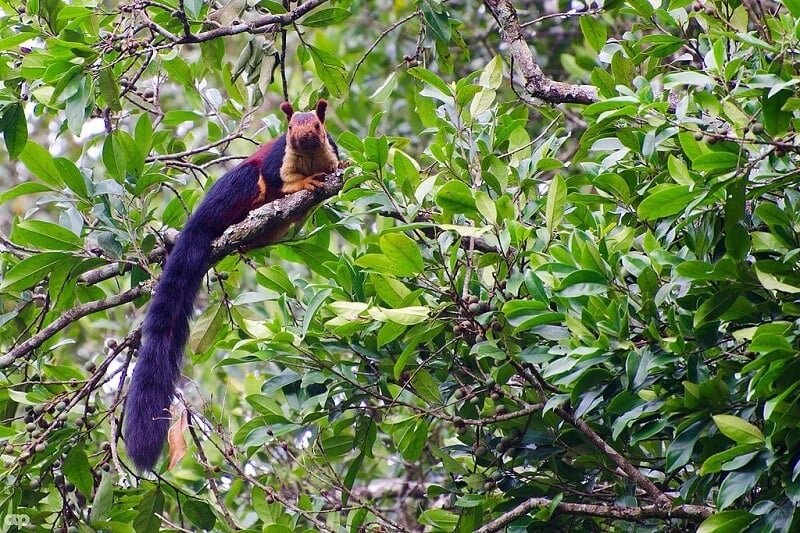
Image credit: Arshad.ka5 | Wikimedia Commons
This furry rodent took centre stage in the introduction, so we might as well start with it! The Malabar Giant Squirrel or the Indian Giant Squirrel can be found in — you guessed it — India. Wildlife watchers have been known to photograph these multicoloured squirrels in the rainforests of Southern India, flitting from tree to tree. If you do spot them in the wild, let them be! Chances are, they’re just making their way back to their nests high up in the greenery.
2. Golden Snub-nosed Monkey
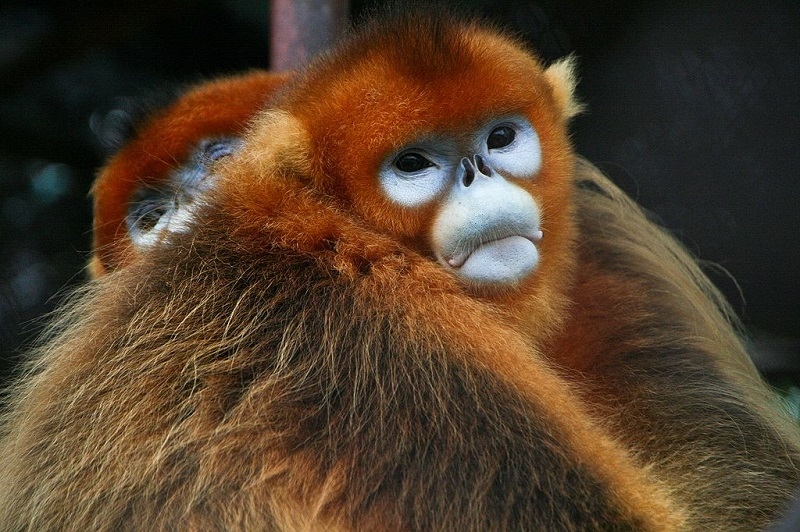
Image credit: Jack Hynes | Wikimedia Commons
Aside from its orangey brown-to-gold fur, what makes the Golden Snub-nosed Monkey stand out is its face. Yes, it’s cute but moreover, its tone takes on a whitish tinge that sometimes appears a light blue or even a bright blue. Can you imagine what striking contrast that makes against its fiery coat? These small primates are both endangered and endemic; you’ll only find them in high-altitude forests in Central China. Fun fact: Some Golden Snub-nosed Monkies are lighter in colour, reminiscent of a golden retriever’s fur!
3. Mandrill
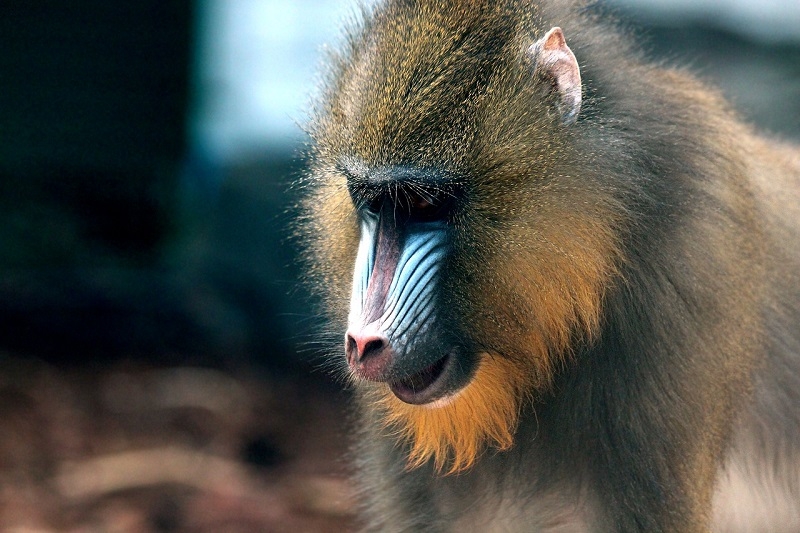
Image credit: zoosnow | Pixabay
Mandrills bring me back to my childhood because of Rafiki, the ever-wise spiritual adviser of Mufasa (then later on, Simba). Yep, in case you missed it, Rafiki is a Mandrill. You can easily tell because of his unique facial markings, which are primarily blue and pinkish red. Don’t be surprised when you see their behinds; they’re just as vibrant in the same tones of blue, white, and pink! They’re considered the world’s largest monkeys (they’re not apes!) — and the most colourful, too. You’ll find these monkeys and their rainbow-coloured butts in African forests nearer the equator.
Fish & other sea creatures
4. Siamese Fighting Fish
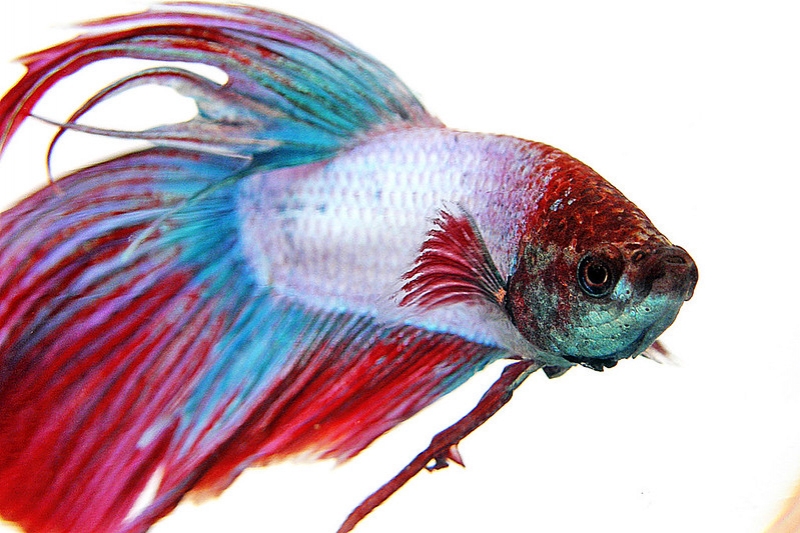
Image credit: Rae134 | Flickr
Excuse the pop culture references, but the Siamese Fighting Fish now reminds me of Ms. Universe-Thailand 2020 Amanda Obdam and her iconic national costume. Like the Siamese Fighting Fish, she donned silvery shades of electric blue, crimson, and white. While you can see the Siamese Fighting Fish frequently sold as pet betta fish, the species traces its origins to the waters of central Thailand. It isn’t difficult to imagine how these brightly coloured aquatic animals caught the eye of local fisherfolk, who decided to domesticate and breed them.
5. Peacock Mantis Shrimp
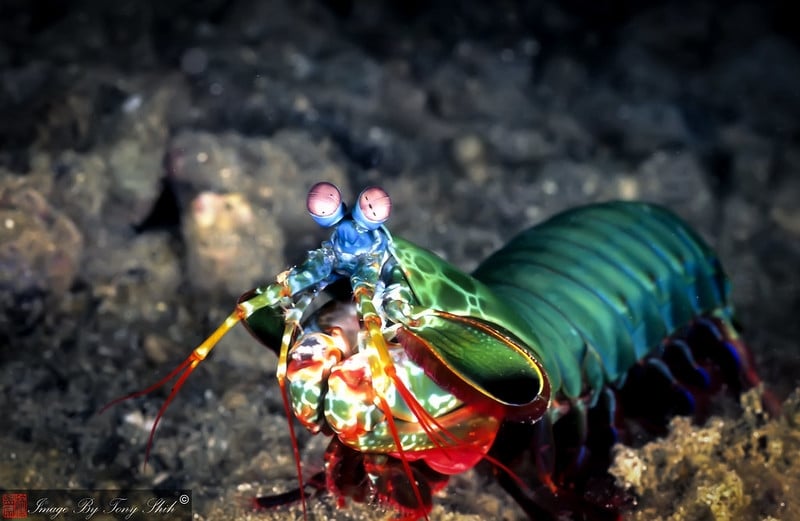
Image credit: Tony Shih | Flickr
Now, this sprightly little fellow looks like a walking rainbow in the shallow ends of the Indo-Pacific oceans. Peacock Mantis Shrimp spend their days scouring through sand and rock to look for mollusks, gastropods, and crabs to munch on. If you’re in warmer waters, your chances of finding them are higher. Fair warning, though: They do strike back when mishandled, which is why scientists have nicknamed them the “thumb splitter.”
6. Mandarin Fish
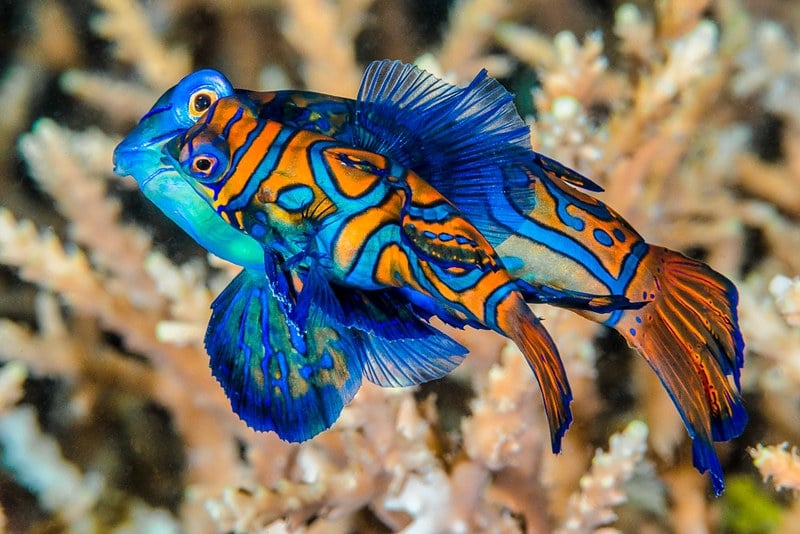
Image credit: Francois Libert | Flickr
Among the world’s most colourful marine animals, this is one that you might have not seen with your own eyes yet — unless in a specialised aquarium or tank. Mandarin Fish aren’t that uncommon; you’ll find them in the western parts of the Pacific Ocean, from Australia to Hong Kong. The only problem is they’re very shy bottom dwellers that prefer to stay within the confines of their coral reef home. Did we mention they’re also sensitive to bright light? That makes photographing them all the more challenging.
Reptiles & amphibians
7. Chameleon
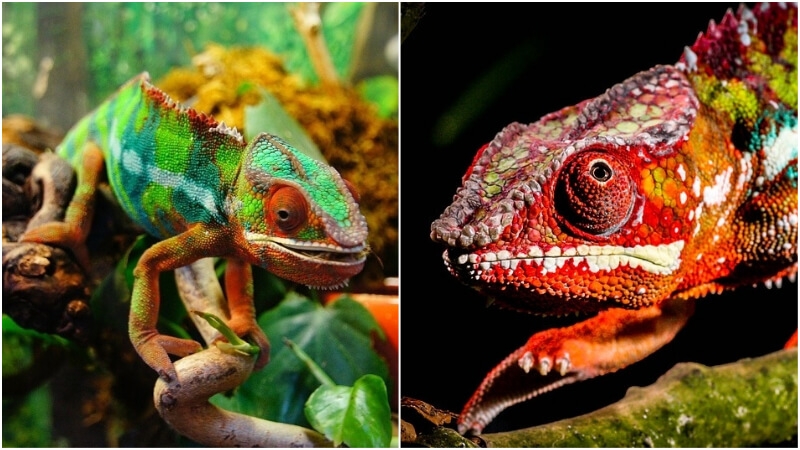
Image credit (L-R): Martinstr | Pixabay; Paul Williams | Flickr
Given their ability to mimic their environment’s general hues, it makes sense that chameleons are on this list of the world’s most colourful animals. It’s quite complicated to discuss how the chameleon’s camouflage works, but let’s just say underneath its light-reflecting scales are cells that have a wide range of pigments. Perhaps the most colourful types of chameleons are the Yemen Chameleon (found in the Arabian Peninsula) and the Panther Chameleon (found in Madagascar. Have you seen either?
8. Brazilian Rainbow Boa
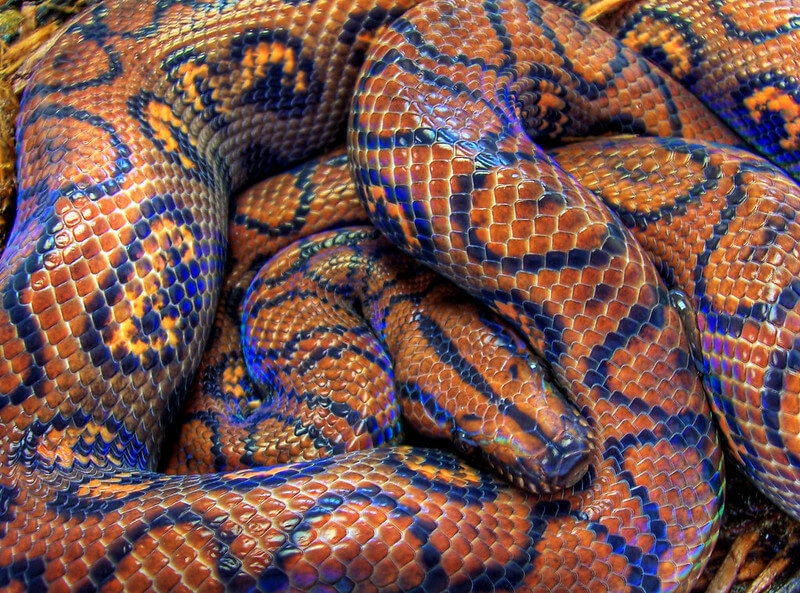
Image credit: B Smith
Hands down, Brazilian Rainbow Boas are gorgeous snakes. Although primarily copper or orange with black markings, something magical happens when light hits their scales a certain way. Given the right conditions, the Brazilian Rainbow Boa’s skin takes on a technicolour nature, literally showing the full spectrum of the rainbow. These beautiful reptiles can be found in the Amazon, as well as in parts of Venezuela and Guyana.
9. Fire Salamander
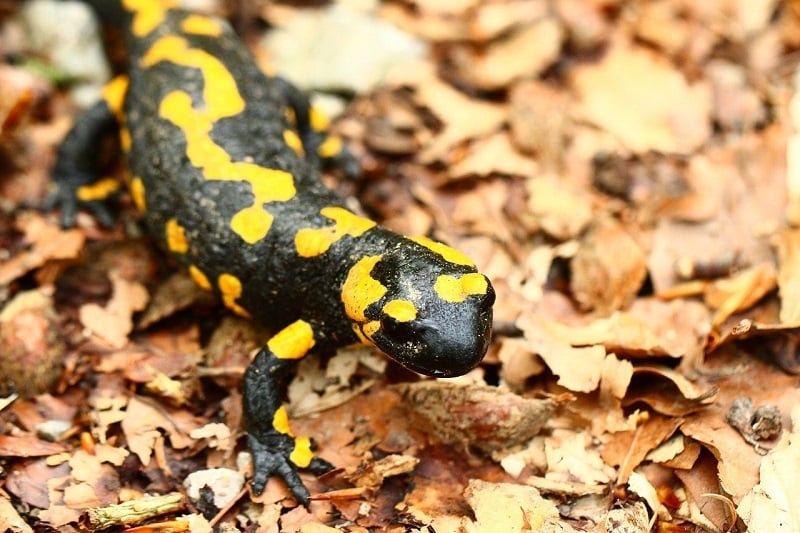
Image credit: Jessica Berger | Pixabay
Common they may be in the hilly forests of Central Europe, but common-looking they are most certainly not. Picture the brightest yellow you can imagine — that’s the colour of the Fire Salamander’s unique markings. Set these patterns against black skin, and the contrast makes it hard to miss even in dense European woodlands. Amphibians represent!
Insects
10. Pink Orchid Mantis
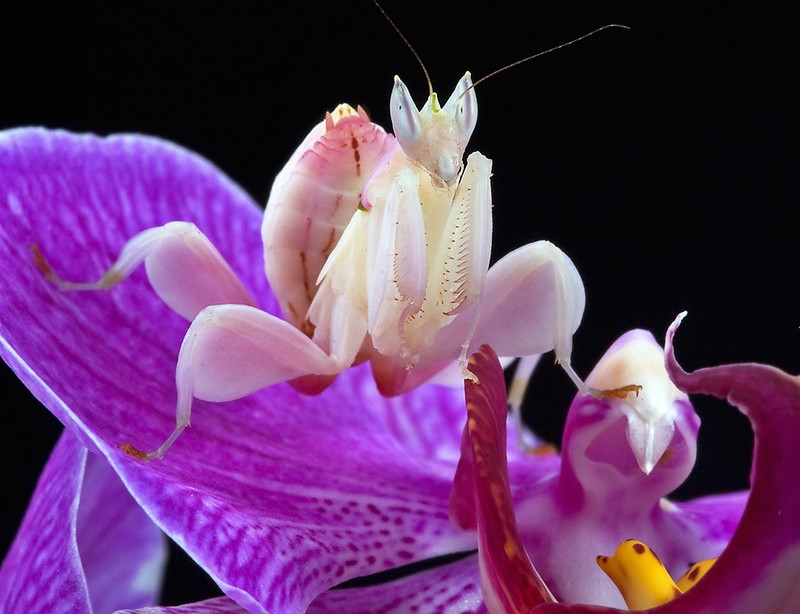
Image credit: N.A. | Flickr
An insect that resembles a flower? This is precisely what the Pink Orchid Mantis looks like, as you can figure out from its name alone. While quite alien-looking (as mantises are; no hate), the Pink Orchid Mantis is actually very pretty — much like the bloom it is named after. This not-so-creepy crawly is predominantly white, with hints of pink here and there. Most Southeast Asians may have not spotted one in the wild, but they actually live in the tropical rainforests of Malaysia, Indonesia, Myanmar, and Thailand.
Also read: 10 Eye-Popping Flower Fields You’ll Want To See In This Lifetime
11. Rosy Maple Moth
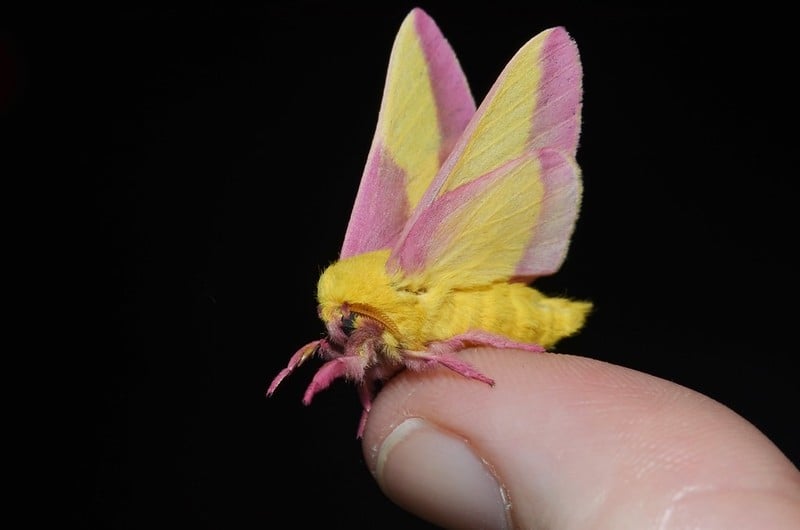
Image credit: Andy Reago and Chrissy McClarren | Flickr
I’m partial to pinks and yellows, so the Rosy Maple Moth may be just the most beautiful insect I’ve ever seen! Now one of my travel goals is to see one in person, preferably in its natural habitat. Because of their ultra-pretty colouration, they’re popular pets in the United States and Canada, where their apple green-hued larvae feed on maple leaves. These nocturnal creatures prefer to be in temperate forests and belong to a scientific grouping of moths called the “great silk moths.”
Birds
12. Lilac-breasted Roller
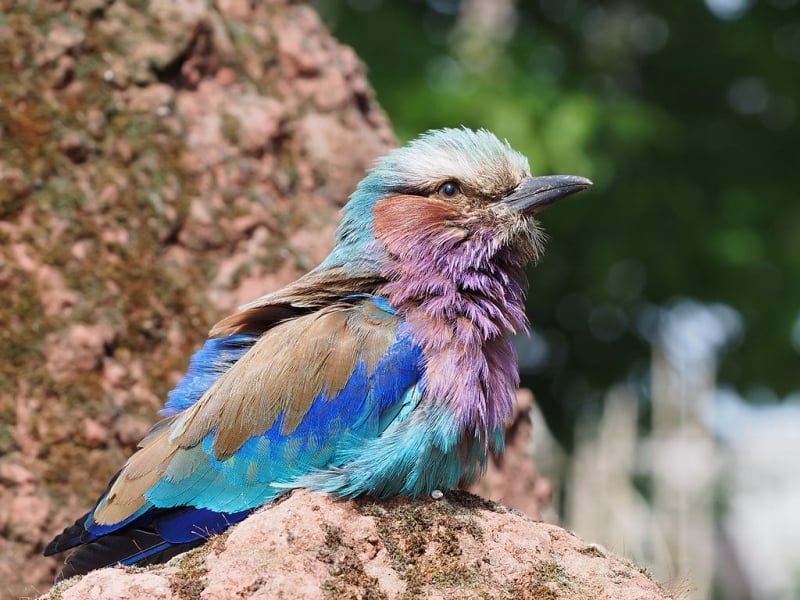
Image credit: Francis C. Franklin | Wikimedia Commons
There are many birds worthy to be included on this list of the world’s most colourful animals, but the Lilac Breasted Roller takes the cake with its dreamy pastel hues. They can be spotted in the Sub-Saharan areas of the African continent, but adventurers have better luck spotting them in national parks. Not to mention, birdwatching in conservation areas lets you play your part in ethical wildlife tourism. Just look at that dainty lilac chest, and the blue to aqua feathers that adorn its wingspan — adorable, right?
13. Scarlet Macaw
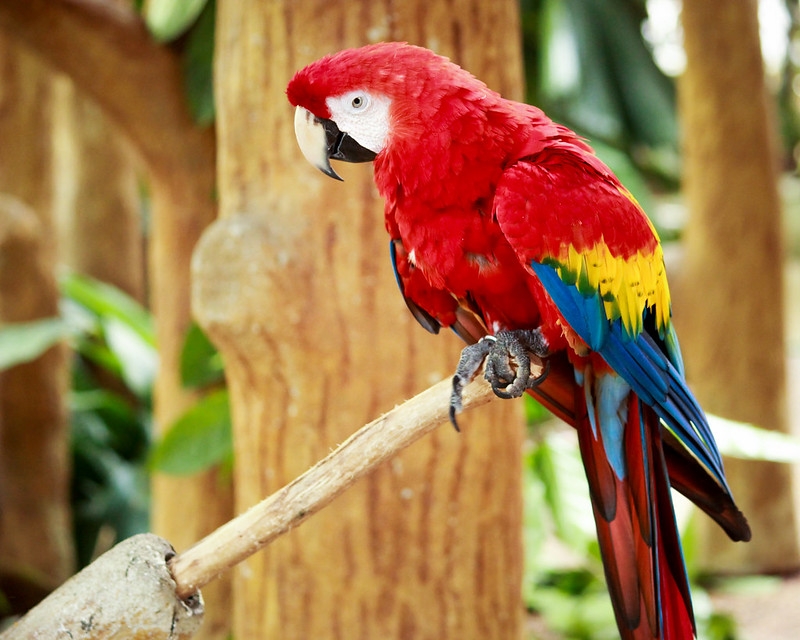
Image credit: Jabid Ishtiaque | Flickr
Of all the most colourful birds out there, nothing seems to be more iconic than the Scarlet Macaw. It’s pretty much the poster child of endangered, vibrantly feathered birds. They’re found in the humid rainforests of South America, and what makes them special is that their feathers contain all the primary colours. If you look closely, sometimes their feathers are a little bit green where the yellow meets blue. You’ll easily get lost in the vivid colour combination that Mother Nature blessed them with!
There are plenty more to mention, and I’m sure you’ll have your suggestions, too. Let us know your favourites among the world’s most colourful animals, and we might just include them on this list!
Also read: Meet the National Animals of Southeast Asia and Where to See Them in Person
Remember, if you’re travelling for wildlife encounters, choose ones that do good instead of harm. Support ethical wildlife tourism — especially ones that support species conservation!





